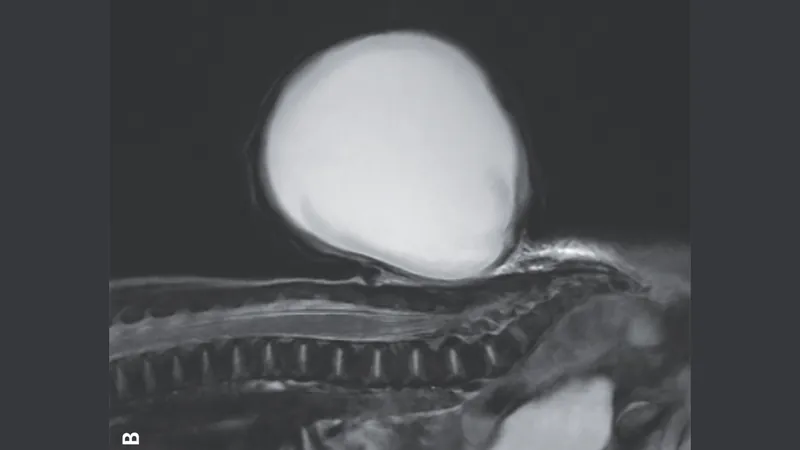
Miraculous Recovery: Baby Born with 'Red Balloon' on His Back Triumphs After Surgery!
2025-01-09
Author: John Tan
A striking image has emerged from Massachusetts General Hospital in Boston, showcasing a newborn boy who was born with a rare and unusual birth defect. This infant developed a large, red, balloon-like sac protruding from his lower back, raising questions and curiosity about his condition.
The sac measured approximately 3 inches (7.7 cm) in length, 2.8 inches (7.1 cm) in width, and 2.1 inches (5.3 cm) in depth. This condition is a result of a neural tube defect known as spina bifida, which affects 5 to 8 out of every 10,000 newborns in the United States, making it one of the most common congenital disabilities after heart defects.
Understanding Spina Bifida
So, what exactly is spina bifida? It occurs when the neural tube, a hollow structure that eventually forms the brain and spinal cord, doesn't close properly during the early stages of pregnancy, typically between the third and fourth weeks after conception. In many cases, this gap is covered by skin and causes no symptoms, leaving many unaware they have the condition. However, in some instances, the protective tissue and fluid around the spinal cord are pushed through this gap, leading to a protruding sac — a condition known as meningocele, which is what this little boy experienced.
Incredibly, scientists have not pinpointed the exact causes of spina bifida. It is often associated with a combination of genetic, nutritional, and environmental factors. For instance, deficiencies in folate or vitamin B9, specific medications like the anti-epileptic valproic acid, and poorly managed diabetes in pregnant mothers can increase the likelihood of having a child with this defect. Fortunately for this family, none of these risk factors were cited in the newborn's case, according to a study published in the New England Journal of Medicine.
Surgical Intervention and Recovery
Doctors detected the spinal defect during a routine ultrasound at around 20 weeks into the pregnancy. While many children with meningoceles experience minor challenges — such as bladder and bowel issues — the prognosis is often positive, with a surgical intervention being an effective treatment option.
In this specific case, the parents decided to proceed with surgery to remove the sac and reconstruct the spinal cord shortly after birth. Remarkably, just four days post-operation, the baby was discharged from the hospital. During a six-month follow-up visit, he showed signs of healthy development without any significant complications.
A Hopeful Future
While complications can arise with a more severe form of spina bifida called myelomeningocele, where neural tissue is involved, the outcome for many affected children is hopeful. This heartwarming story of resilience underscores the remarkable strides in medical science that allow for successful interventions even in the face of daunting challenges.
Stay tuned for more inspirational stories, and let's continue to celebrate the miracles of modern medicine!



 Brasil (PT)
Brasil (PT)
 Canada (EN)
Canada (EN)
 Chile (ES)
Chile (ES)
 Česko (CS)
Česko (CS)
 대한민국 (KO)
대한민국 (KO)
 España (ES)
España (ES)
 France (FR)
France (FR)
 Hong Kong (EN)
Hong Kong (EN)
 Italia (IT)
Italia (IT)
 日本 (JA)
日本 (JA)
 Magyarország (HU)
Magyarország (HU)
 Norge (NO)
Norge (NO)
 Polska (PL)
Polska (PL)
 Schweiz (DE)
Schweiz (DE)
 Singapore (EN)
Singapore (EN)
 Sverige (SV)
Sverige (SV)
 Suomi (FI)
Suomi (FI)
 Türkiye (TR)
Türkiye (TR)
 الإمارات العربية المتحدة (AR)
الإمارات العربية المتحدة (AR)